In part 2 of our report on Salwa Mikdadi's keynote lecture at the "Arab Express" symposium we focus on the activities of Arab artists and consider their contribution to the development of Arab art.
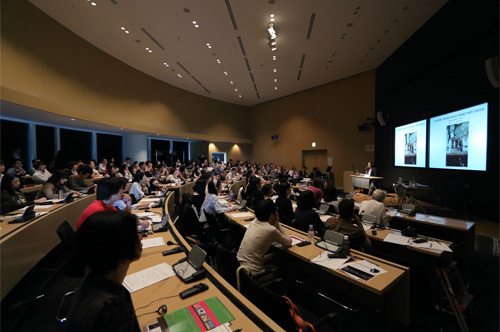
Symposium image photo
Photo: Mikuriya Shinichiro
The challenge artists present to the political and social powers
Another contributing factor is the role of the Arab Diaspora, and in particular artists who acted as the first curators. Artists such as Mona Hatoum, Ghada Amer, Walid Raad, Akram Zaatari, Emily Jacir, and Jannan Al-Ani drew attention to the region's art. Their art portrayed a more nuanced conceptual representation of the local political and social concerns that were being glossed over or simply not covered in mainstream Western media. Far from being didactic, their art problematized the subject and challenged the viewer to question the hegemonic Eurocentric interpretation of art.
Instead of essentializing the content, works by Mona Hatoum situated the discourse in a universal context. Her work has a timeless appeal to all people and all ages. Hatoum moves us between what is foreboding and unfamiliar. She explored institutional power and surveillance in the 1980s, subjects that are still relevant today.
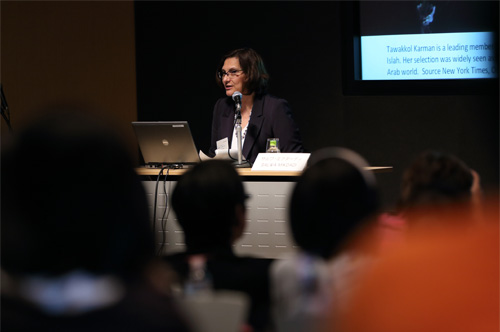
Salwa Mikdadi(Art historian specializing in modern and contemporary art of the Arab world)
Photo: Mikuriya Shinichiro
Arab art finding a way around censorship
Censorship remains a constant challenge facing Arab artists. For the most part, art now reaches beyond the region and outside the control of censors. The internet and social media have given new life to old censored work, taking it to a wider and more diverse audience with at times severe repercussions. Last year, the Syrian cartoonist Ali Farzat had his hands crushed by the regime's forces in response to his scathing cartoons.
Prior to the Arab Spring, Arab artists expressed their discontent with the regime in many subtle ways. Others were not as discreet. For example, in the early 1950s, after the Egyptian artist Inji Efflatoun was imprisoned by Gamal Abdel Nasser for her political views, continued to paint in her prison cell.
Cartoonist and painter George Bahgoury chose to live in exile, as did many Iraqi artists. Conceptual art that challenged the social and political powers escaped the censors' radars, as its audience was limited to the elite.
For all other arts, there was always a way around censorship by creating clever satire that was too popular to censor. Arab cinema, literature, and theater, and even Syrian soap opera, were critical of authoritarian regimes and the absence of human rights. One example was the social satire of Syrian playwright Saadallah Wannous (1941-1997). Egyptian novelist Sonallah Ibrahim and Saudi Arabian novelist Abdul Rahman Munif were both critical of political oppression and were thus imprisoned for their writing or lived in exile. Their novels were translated into several languages and reached international audiences - as did the work of outspoken artists. All this contributed to the visibility of Arab art.
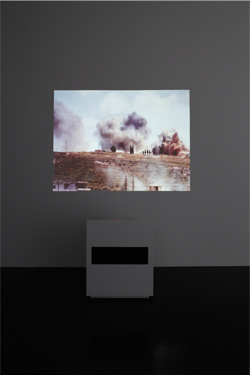
Akram Zaatari
Saida, June 6, 1982
2002
Courtesy: Sfeir-Semler Gallery
Photo: Kioku Keizo
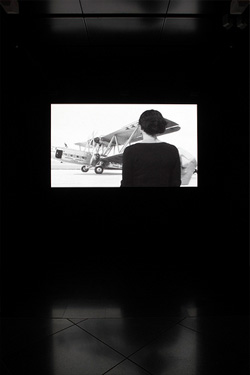
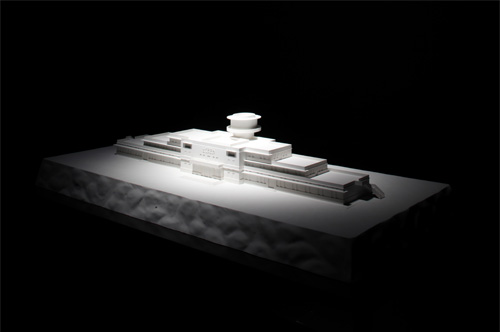
Emily Jacir
Lydda Airport
2007-09
Courtesy: Alexander and Bonin
Photo: Kioku Keizo
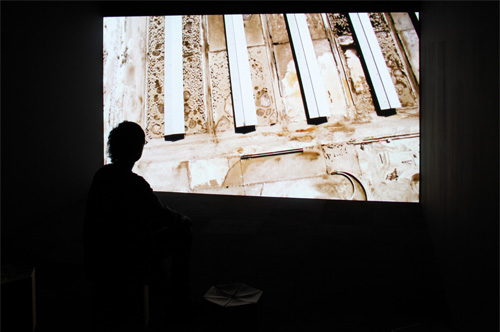
Jananne Al-Ani
Shadow Sites I
2010
Photo: Kioku Keizo
■Relevant information
・Today's Arab Art
Part 1 Arab art under the world spotlight
Part 2 Arab artists on the rise
Part 3 The future of ever-changing Arab art
Part 4 The Arab Spring and its impact on art
・Arab Express: The Latest Art from the Arab World
June 16 - October 28, 2012
・"Arab Express: The Latest Art from the Arab World" photos from installation period (flickr)
・"Arab Express: The Latest Art from the Arab World" Installation view (flickr)
Section 1
Section 2
Section 3 & "Arab Lounge"
・Interview: Nanjo Fumio on "Arab Express"
Part 1 Comparing the Arab world of the 1970s with that of today
Part 2 Why is the world fascinated with Arab contemporary art?
Part 3 An exhibition to encourage cultural diplomacy, mutual understanding
・Interview: Kondo Kenichi on "Arab Express"
Part 1 Want to show Japan the diversity of the Arab world
Part 2 Exhibition highlights: Black Fountain and "Arab Lounge"








